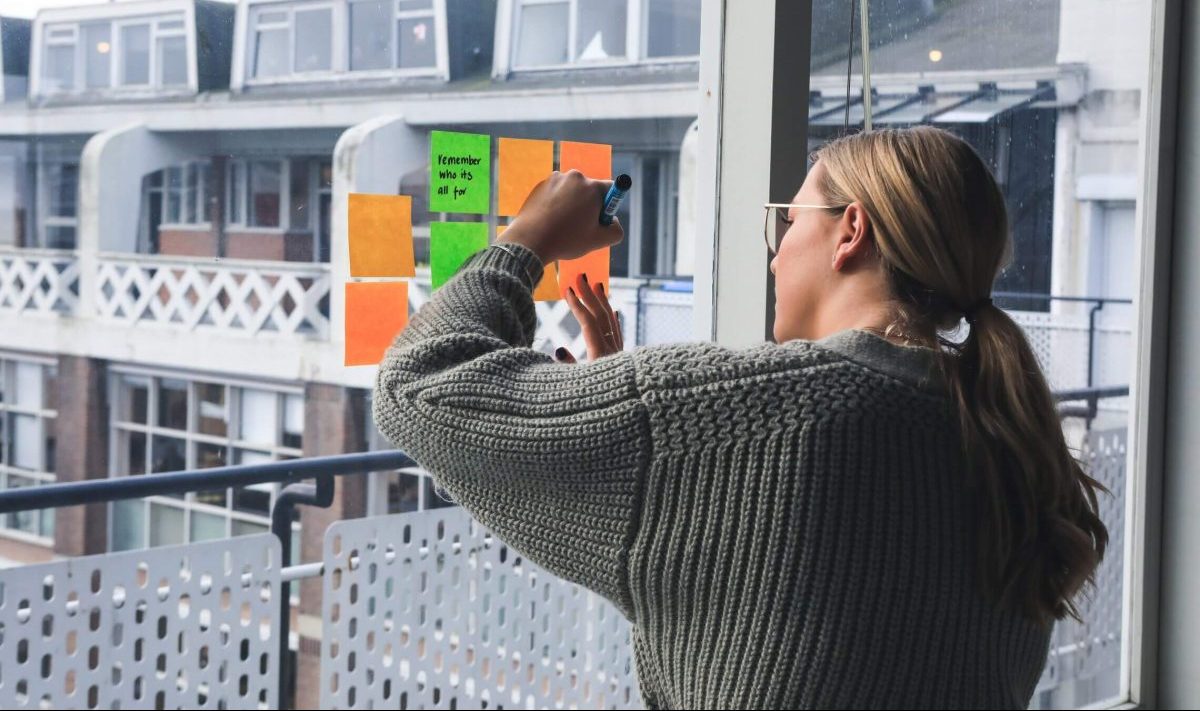Organizations these days are currently facing a considerable paradigm shift and trend- distributed virtual teams, and flexible work is increasing. Certainly, ensuring smooth virtual collaboration and communication is one of the biggest challenges that business executives and managers face, especially when working with their work teams remotely. That is especially true for those used to meetings with teammates in conventional office spaces rather than video and audio conferencing.
If you are a business executive, read on to learn about the best practices and tips for remote work. You will be able to implement them to boost virtual collaboration and communication with your team members.
Establishing Virtual Trust
There is no doubt that trust is the bedrock for any successful business collaboration, virtual or otherwise. It is the glue stick that bonds and connects business executives, team members, and builds engagement and commitment.
When you are part of a collocated team, trust gradually comes from personal interactions and mutual work experiences. However, virtual work teams do not share this particular context. Executives and team members usually do not have a clue regarding their counterparts' work environment. Neither do they know the work ethic, personal life, or previous performance of a colleague.
Tactics that assist remote teams of business executives and other members in bonding include a variety of things. From using virtual settings (seating charts and room maps), and participant photographs with brief descriptions of their backgrounds (professional) to fascinating details of their social lives. It is also helpful to carve a couple of minutes at the end or start of a virtual meeting for "casual chat". This way, all the executives attending the meeting can deepen or build personal relationships.
Use the Correct Tools
Ensure that you are making use of the correct tools to communicate and collaborate with your team's remote members. To that end, email is a very good option. Still, it would help if you did not solely rely on it to stay in touch virtually with fellow members, particularly when it is about organizing detailed weekly review sessions. There are many other tools and applications available for virtual correspondence that will assist you in communicating more effectively. Even more, these tools can help you in keeping pace with what your workers and teammates are doing in real-time.
As a case to point, the platform Weekdone offers business executives and other team members with regular reports and visual dashboards. Suppose you are a manager or a senior executive. In that case, this allows for easy progress tracking and figuring out where each team member is currently standing. Most conveniently, with regard to a certain work project. Also, Weekdone enables executives to conduct 1-1 and team meetings as well. That facilitates managers to constantly keep in touch with other team members and easily stick to the PPP and OKR frameworks.
Get Rid of Micro-Management
A key prerequisite to effective virtual collaboration is getting rid of micromanagement. In a traditional office environment, managers, CEO's and other business executives usually follow the incremental progress of their team members, from hours logged to emails sent. However, a virtual team works differently. You select skilled and qualified team members and have faith in them that they will carry out their job responsibilities properly. Instead of managing tasks, it is better to manage results. Utilize deadlines and benchmarks to gauge success and effectiveness.
Understand and Respect Time Differences
When it comes to virtual communication with your teammates, Time zones are one important thing that you can't control. You have no choice but to accept and acclimatize to these day and night differences. As a standard rule, business executives and managers should try to create proper scheduling. For instance, the largest difference in time between any two team members should not be more than 12 hours. Similarly, once you can come online late in the day and the other early for your scheduled face-to-face meetings.

Maintain Visual Component
If you are part of a remote team, it is quite understandable that your first preference is to minimize visual contact. That is to say, keeping communications that are face-to-face to a bare minimum and sticking to audio correspondence. However, it is still important to ensure that you schedule face-to-face virtual meetings (instead of just audio) regularly. It can be via Skype, Zoom, or any tool that professionals use for video conferencing. That may be twice a month, once a week, or daily, depending on your work team. You will need to keep a schedule for this and then stick to it.
Also, we react to several small signals unconsciously, such as facial gestures and expressions. These are vital to comprehend the point of view of the other person. However, the detection of these signals is barely possible when we cannot see each other. Hence, it is crucial for business executives to maintain the visual component. It can be done simply by switching on the webcam when virtually interacting with their colleagues and team members.
Give Sufficient Feedback
When you manage a team in a conventional office setting, it is considerably easy to provide feedback to your work team members on their recent task or project or just the way they are generally working. You have the flexibility to call them in your office for a brief meeting. Additionally, you can easily swing by their desk for a quick discussion.
On the other hand, if you are a senior-level business executive or manager leading a remote virtual team, things differ. You need to be slightly more deliberate about ensuring your team members and workers receive your feedback. Thankfully, courtesy to the prevalence of efficient digital communication tools these days, such as email, it is very easy to give feedback to your team members. However, it is not sufficient to send them email messages. You have to ensure that they receive the messages in the right way.
It might not always do the job to send a quick email when you have to communicate with a team member regarding how they have performed a certain task. That individual can misinterpret your message and feel defeated or become defensive.
The virtual team member may not comprehend that there exists an issue and keep on doing the same thing repeatedly. That is anything but effective virtual communication! Hence, it is of paramount importance to have an online virtual platform for conversation in real-time. It is easy to be explicitly clear about what you have to say while also being uplifting and kind when you can chat with your team members back and forth and provide them with representations (visual) of what they are doing well and what they are not.
Additionally, you can implement Video Reply for Zendesk to send out visual feedbacks and tutorials to your team.

Ensuring each Team Member is in the Loop
This is a large part of virtual communication and collaboration. Apart from giving adequate feedback, business executives have to ensure that they keep each team member in the loop. They have to know when the work projects are due, when weekly reviews and specific meetings are happening. Above all, it's important to know how every team member is performing. Especially when it comes to taking care of their particular part of a group task.
Suppose your remote workers only know what they are doing and have no clue regarding their teammates' activities or what your expectations are from them. In that case, it will be very difficult for them to bear responsibility. This is particularly vital for virtual and remote team members.
When you manage a virtual work team, all the members of the team require regular real-time updates. Please do not make the mistake of waiting until something is almost due or past-due to get in touch. Keep in touch constantly with everyone throughout the project's duration. This way, you can identify various ways in which you can provide assistance to fix an issue as soon as it surfaces.
Take the "Awkwardness" into Stride
Regardless of how well acquainted you are with digital communication tools, virtual communication will, at times, still be slightly challenging and uncomfortable. Nothing indeed feels as natural as communicating in-person in the workplace — and that is fine.
When you communicate virtually, recalibrate your expectations before every interaction to prevent yourself from holding others to unrealistic expectations.
So what if it takes some time to set up and make sure that your laptop audio is working fine or you haven't turned yourself into a strawberry accidentally on your meeting zoom call? The main thing is that you are trying to work things out. Plus, little errors like these may even help your team members commit the virtual meeting to memory.
That said, we cannot fill up the void of an efficiently running traditional office environment. Hence, it is completely fine to allow changes to happen as you acclimatize and learn to communicate in a way that is quite different from what you are used to virtually.
Duplicate Components of a Normal Conventional Office
Consider small office things that virtual team members miss out on and see if you can incorporate replacements of these things in virtual surroundings. As a case in point, virtual employees are deprived of the "water cooler" conversations that usually occur when members of a team get together in the office kitchen for coffee, break, and brief breaks.
To duplicate this, you can consider making use of a digital conversational tool to generate a "water cooler" channel. This can be the place where team members can post interesting articles, random news pieces, and GIFs. This way, they can replicate the fun and entertainment that comes to pass over a cup of tea or coffee in the office kitchen.

Establishing Expectations for Virtual Meeting Behavior
It is a great idea to set expectations and establish guidelines for virtual calls and meetings with fellow business executives and team members. Each individual needs to have similar expectations for remote meetings to work fine. If a few team members pick up the telephone and dial in while other video conferences into a remote call, that usually creates uneven pauses and imbalances. Suppose some team members of the team are remote while others are together in a single meeting room. In that case, it is the meeting organizer's job to normalize the virtual meeting experience for everyone.
As a case to point, if you are brainstorming and jotting down various ideas on an office whiteboard, someone may have to transliterate all the text and information into Google Docs for the remote members of the team. You will want to actively enhance and tweak the virtual communication and collaboration experience. This way, the office team members do not get self-satisfied, and the remote members do not get frustrated.
Squeeze the Most out of Written Correspondence
Text-based communication puts less amount of stress on interpersonal skills and physical appearance and. Hence, for business executives, this communication type can unlock the concealed potential of their team members. They might not feel too confident, interacting and speaking up during remote video calls.
However, it is very important to bear in mind that a large part of communication is non-verbal. And simultaneously, written correspondence can pose particular difficulties for some individuals. If you are one of these people, you can follow the seven C's of Communication to better engage with your virtual team.
Bottom Line
Virtual collaboration and communication with your team members may be a daunting and challenging task at first, but if you keep working at it, you will soon get the hang of it. By implementing the tips mentioned above and practices, you can ensure every individual in the remote team is on the same page and can work together smoothly and efficiently.






